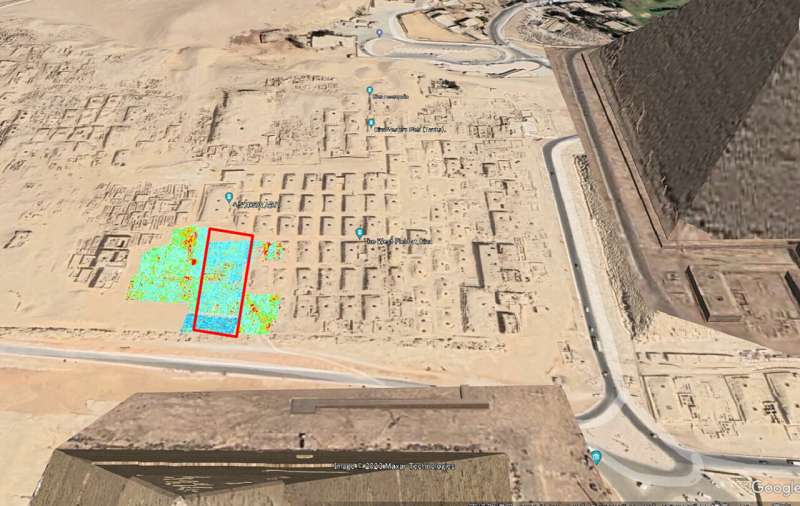May 15, 2024 report
This article has been reviewed according to Science X's editorial process and policies. Editors have highlighted the following attributes while ensuring the content's credibility:
fact-checked
trusted source
proofread
Underground 'anomaly' found near iconic Giza pyramid complex

A multi-institutional team of archaeological researchers from Japan and Egypt has discovered what they describe as an underground "anomaly" near the iconic Giza pyramid complex. In their study, published in the journal Archaeological Prospection, the group used both ground-penetrating radar (GPR) and electrical resistivity tomography (ERT) to investigate the area beneath the Western Cemetery in Giza.
Research in Giza has been going on for hundreds of years and has led to a better understanding of the pyramids and the people who built them. Prior research has also led to the discovery of the Western Cemetery, which lies near the Great Pyramid of Giza.
Study of the cemetery has been focused mostly on mastabas, rectangular tombs made of limestone or mud, with flat roofs. But one part of the Western Cemetery has remained mostly unexplored—a flat, vacant area with no structures.
For this new study, the research team investigated whether anything was buried in that area. To find out, they conducted ground surveys using GPR and ERT.
Data from their surveys showed that there is something beneath the surface. The researchers describe it as an anomaly because its density is different from the surrounding ground. The data also showed that the anomaly was almost certainly man-made due to its shape. They could see what appeared to be two underground structures—one shallow, one deep.
The shallow structure is L-shaped and just under 2 meters deep. It measures approximately 10 meters wide by 15 meters long. They suspect its purpose was to support the construction of the larger, deeper structure, because it appears to have been backfilled with sand. The deeper structure was measured at almost 5 meters below ground at its most shallow and 10 meters at its deepest. It was measured at 10 square meters.
The team suggests careful excavation of the site be carried out to determine the nature of the structures.
More information: Motoyuki Sato et al, GPR and ERT Exploration in the Western Cemetery in Giza, Egypt, Archaeological Prospection (2024). DOI: 10.1002/arp.1940
© 2024 Science X Network





















